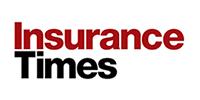’Small, low value drones can perform a pretty high level of professional services at a fraction of the cost of what you would have had to do previously,’ says head of class
Unmanned aerial vehicles – now known onomatopoeically as drones for the low hum their electric motors produce – are big business.

From their largely specialist use by the military, as early as during World War One, drone technology has come on leaps and bounds in recent years to the point where the buzz of quadcopters zipping around is now commonplace.
Alongside weekend hobbyists, commercial uses for drones are becoming increasingly sophisticated – with business sectors from surveying and agriculture to disaster response and construction all beginning to take advantage of the technology.
A Zion Market Research report from 2022 estimated that the global drone market was valued at £23.42bn for that year. A subsequent report published by Grand View Research in 2024 found that the drone market had grown to £56.64bn in just two years, with predictions that it would reach £201.94bn by 2030.
The insurance market for this segment is also maturing rapidly to keep up with commercial demand, as well as advise clients on the specific regulations that govern drone use and necessitate specific coverages.
Speaking to Insurance Times, Simon Ritterband, founder and managing director at drone specialist MGA Moonrock Drone Insurance, said: ”A lot of people tell us that they don’t have a requirement for drone insurance because they have a public liability policy for their company, but actually they do [have this requirement] because drone insurance has to be written on aviation wording for war and terrorism.
”The liability section is the fundamental part of drone cover and all of our policies conform to the European Union (EU) requirement for drone insurance, which is EC 785-2004.”
EC 785-2004 is an EU regulation, retained in the UK following Brexit, that requires both commercial and personal drone operators to have insurance that does not exclude war and terrorism risks and covers potential extraordinary perils, such as sabotage and hijacking, with limits based on maximum take off mass.
Broker opportunity
This regulation, among others, requires that commercial drone operators specifically insure their drone-based activities. Therefore, there is an opportunity here for brokers to advise clients on the cover they need as drone use cases escalate and grow.
Read: Briefing – Drone cover moving from ‘niche’ to ‘vanilla’ risk for insurance sector
Read: Drone MGA secures capacity for new liability product
Explore more MGA related content here, or discover other news stories here
Specialist insurer Hiscox, Moonrock’s original capacity provider back in 2016, operates a broker scheme with Moonrock to provide drone insurance.
Its schemes sector lead underwriter, Alex Hughes, explained: ”Drone cover doesn’t typically feature on commercial combined products because of aviation related exclusions and the requirement to comply with EU regulation, so that was a huge gap in the market.
”Even when talking about large organisations, they need bolt-on products and that’s where the broker expertise comes into the conversation because 99 times out of 100, there’s not going to be adequate coverage on their traditional insurance arrangements.
”Large corporates – like construction firms, surveying firms and even those in the media and entertainment world – have comprehensive combined liability packages placed elsewhere, but there’s still the requirement for that niche drone policy to act in combination with the rest of their insurance programme because of the gaps that you see around liability and regulation.”
As the use cases for drones grow across various commercial sectors – for example, crop and livestock monitoring in the agricultural sector, or for emergency medical or food deliveries in disaster zones – brokers will need to be aware of the need for niche insurance products to ensure that clients are properly protected.
Martin Jackson, class leader for aviation at Apollo, which sponsored Moonrock to become a Lloyd’s coverholder in May 2024 and works closely with the MGA, added that drone operators would need a degree of extra support as the market matured.
He explained: ”A lot of these new drone operators aren’t really used to insurance. If you’re an existing aviation company, then you know the market – but it’s very new for drone operators and there’s a reasonable amount of handholding needed from the insurance end.”
Sky’s the limit
The development of drone technology is rapidly increasing, with drones becoming cheaper, safer, more diverse and better at completing a whole range of tasks.
Jackson explained: “The technology for drones and related propulsion methods, like electric vertical take off and landing (evtol) vehicles, is moving ahead very rapidly and people are using them across a reasonably broad range of commercial activities.
“Small, low value drones with high quality sensors or photographic equipment can perform a pretty high level of professional services at a fraction of the cost of what you would have had to do previously. With agriculture, for example, drones can be guided more slowly, more specifically, more safely and with minimal chance of mistaken chemical sprays.”
Hughes added that Hiscox was seeing an increase in demand for cover for drone swarm show providers – which mimic fireworks displays using drone-mounted light emitting diodes (LEDs) – wind turbine assessments and confined space environments where “historically, it’s been very high risk to send an individual into [due to] natural perils”.
But, alongside the development of use cases for drones, the technology underpinning them has also made them safer.
Hughes said: ”We’ve seen some really positive benefits from the technological advancements in the drone sector, like improvements in geofencing risks and collision avoidance sensors, which mean drones can only operate within a certain geographical fencing that reduces collision risk with buildings.
“We’re also seeing enhancements in flight data which, almost like a black box, can help manage a fraud risk by identifying whether there was a collision mid-flight or the operator had a fly away.”
Pricing has also fallen significantly in the drone insurance sector as the market has developed, owing to fewer technology failures and better historical data.
Ritterband explained: ”Especially on commoditised, within visual line of sight flight operations, prices really have come down. That’s based on our understanding of the risk, the operations and that the technology has improved.”
Jackson added: “As an insurer, you have to trust that these things don’t just suddenly start flying without the respective environment for testing. You have to put a certain trust in the technology, regulation and development around these things.”
Enabling growth
As the drone sector continues to grow, insurance will be vital in supporting the increasing number of ways the technology can be deployed – for example, increasing the quality of life for consumers and efficiency for commercial entities.
”We wanted to make sure that we were an enabler, not a blocker, to the market by creating policies and premiums that were not prohibitive for growth.”
Drone deliveries, which Ritterband said Moonrock was already insuring internationally, could reduce traffic and decrease transit times in the future, while autonomous passenger drone taxis could revolutionise travel.
Ritterband added that Moonrock was seeking to collaborate with innovative companies at the seed stage, so that it could better understand drone related risks and support developments for the future.
He explained: ”There are two reasons why the drone sector might not succeed – regulation and insurance. We wanted to make sure that we were an enabler, not a blocker, to the market by creating policies and premiums that were not prohibitive for growth.
“That involves a whole raft of things we need to quantify, like airspace, operators, training and maintenance – and I’m not saying that drones are going to deliver to central London high rise flats tomorrow, but there will be an incremental approach to it.
”A lot of brokers have been quite slow to take this up, but a lot of them are now realising that this is really a massive growth area – they’re not only getting more requests, but they’re seeing the transformation of the old world into the new in terms of how the aviation market works.”

With a particular interest in regulation, technology, innovation and political stories, he has covered issues from the multioccupancy buildings scandal to the insurance implications of quantum computing and the growth of new markets.View full Profile















































No comments yet